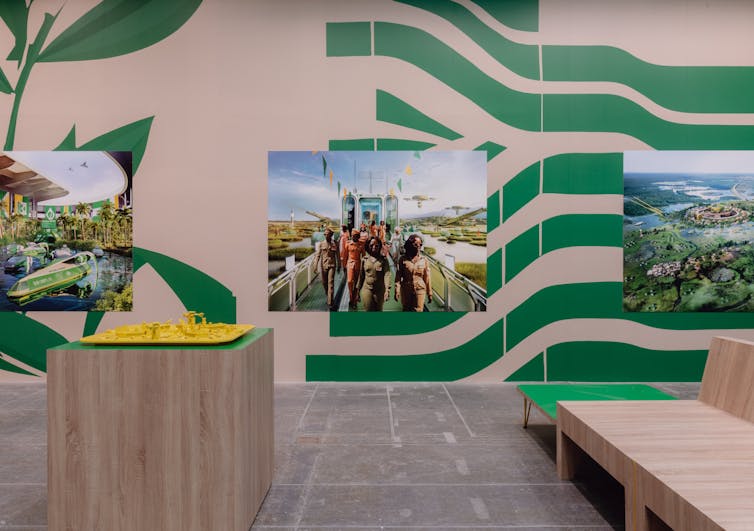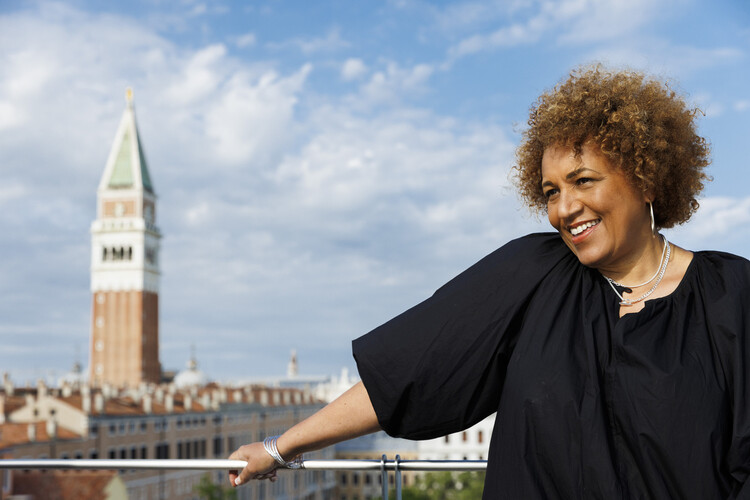By Tomà Berlanda, University of Cape Town
Presented since 1979, the Venice Architecture Biennale (La Biennale di Venezia) is possibly the most influential architecture exhibition in the world.
For the first time, this year’s edition is curated by an African architect, Lesley Lokko.
She has ensured that a strong African presence is the central feature of the show. Indeed, the 2023 exhibition is part of an undeniable shift towards a more just representation in global architecture.
The biennale, a cultural institution established as early as 1895, is a manifestation of a world order established by European imperialism. It is an international platform for a network of powerful academic and professional groups, material producers, construction firms, developers and public authorities. They come together in Venice to show and discuss their work.

The biennale relies heavily on private sponsors and numerous countries host their own pavilions in Venice. While an African curator has no influence over these pavilions, she has ample latitude to determine the shape of the main pavilion and its exhibitions, the Force Majeure and the Dangerous Liaisons sections.
As a professor of architecture with a scholarly focus on African cities and non-western architectural forms, I have been attending the preview week in Venice. I believe that the African presence at the event brings a much needed – and complicated – new perspective that needs to shape the future of the biennale.
Lesley Lokko and Demas Nwoko
In the very first room of this year’s show, at the entrance of the Corderie dell’Arsenale – a thin 300 metre long building where the Venetian navy produced its ropes for over seven centuries – a diffused blue light shines. It invites visitors to reflect on the notion of the blue hour, the time after sunset and before night. For Lokko the light marks a new era: “A moment between dream and awakening … a moment of hope.”
A Ghanaian-Scottish architect, educator and novelist, Lokko is the first woman of colour to curate the show. In her curatorial statement she highlights the “laboratory of the future”. Rather than a place for scientific experiments, the laboratory needs to be thought of more as a workshop. Here different practitioners can collaboratively test new forms of architecture. In the west, says Lokko, one continues to associate architects as the figures who build buildings. But they do much more, they build society, competency, knowledge, in a rapidly hybridising and interwoven world.
Lokko subverts perspectives. She invites visitors to look at Africa not as a place where western models should be transferred to, but rather from which much can be learned.
The decision to award the Golden Lion for Lifetime Achievement to Demas Nwoko, a Nigerian architect and artist born in 1935, is significant to Lokko’s perspective.
His relatively few buildings are cited as “forerunners of the sustainable, resource-mindful, and culturally authentic forms of expression now sweeping across the African continent – and the globe”.
An example of this is the Dominican Institute and Chapel he completed in Ibadan, Nigeria in 1975. The motifs of a Christian building are reinterpreted through an African sense of place and ornamentation.
Lokko’s approach represents a radical shift in the way the biennale operates. It is an important contribution to the creation of genuine “contact zones”: places of productive exchange between people offering different views. This replaces the old arbitrary hierarchies with a reciprocal respect for diversity.

This year’s event sparked a controversy over visas being denied to African architects. A good starting point for reciprocal respect would be to make it really possible for all to participate and attend, by breaking the barriers imposed by systemic inequalities and xenophobic immigration policies.
What’s on show
Of the 89, mostly young, participants invited to this year’s show, over half of are from Africa or the diaspora. They are carefully orchestrated in the show’s two main venues, the Giardini and the Arsenale, and six sections.
In the main pavilion, where the Force Majeure exhibition sets the scene, a towering installation by Nigerian visual artist Olalekan Jeyifous epitomises the imagery of the African future. His images are powerful spatial metaphors of the relationship between architecture, communities and environment. And the need to repair the damage done by former colonial powers.

In another room, the Oral Archive by Nairobi-based collective Cave Bureau celebrates the oral tradition of passing down knowledge across generations as a way to keep humans in community with the earth. On a multimedia screen three channels overlap. They display conversations with cave-dwelling communities, sequences from the Anthropocene museum, and drawings, maps and models done across vast geological sites.
The emphasis on two of Lokko’s overarching biennale themes – decolonisation and decarbonisation – can also be found also in the long, and at times uneven, sequence at the Arsenale. Here the Dangerous Liaisons section is interwoven with the curator’s special projects titled Food, Agriculture and Climate Change; Gender and Geography; Mnemonic; and Guests from the Future.

Here the synthetic landscapes of Nigerian-born film producer and director Michael Uwemedimo are presented. A physical ground made of clay and contaminated by global capitalism is transported from Port Harcourt in Nigeria to Venice. It is a departure point to imagine the future, displayed through AI-generated images on the ceiling.
Congolese artist and photographer Sammy Baloji expertly deconstructs the official narration of colonial occupation, suggesting a view of architecture and the human body as traces of social history. This is done by displaying an old colonial Belgian documentary poetically interwoven with film footage taken today.
What this all means
The 2023 Venice Architecture Biennale is an important and complicated edition, with a necessary message. One can only hope that the event will continue the process of decolonisation started by Lokko after years of absence of confrontation, comparison, and exchange between different positions.
A radical rethinking of the biennale, and of the (architectural) world in general, is long overdue. We need a different future. Enter the blue hour.
The biennale opens to the public on 20 May and is on until 26 November![]()
Tomà Berlanda, Professor of Architecture, University of Cape Town
This article is republished from The Conversation under a Creative Commons license. Read the original article.
Also Read
Constructing Fire-Resistant Buildings in Hot Climates

